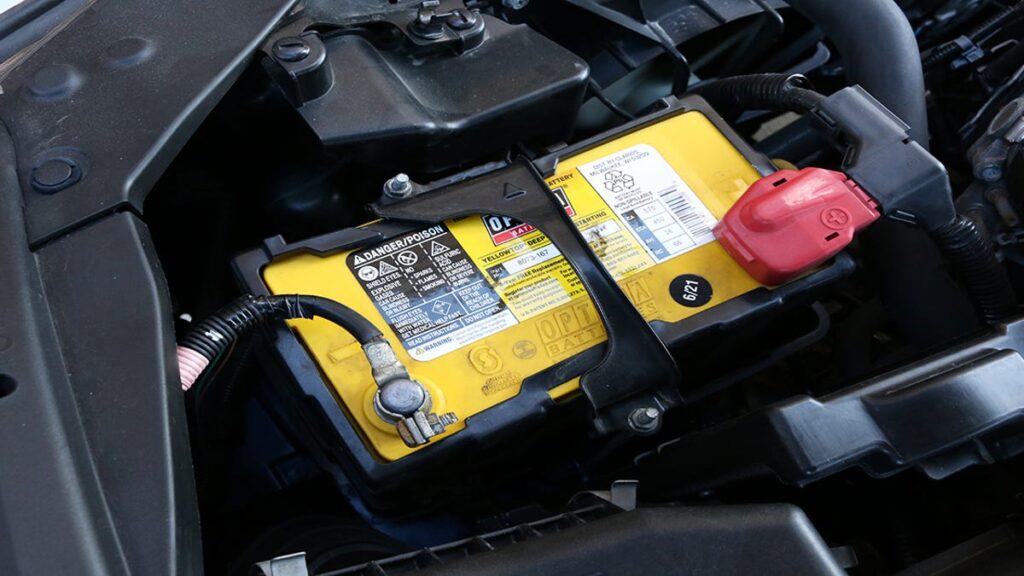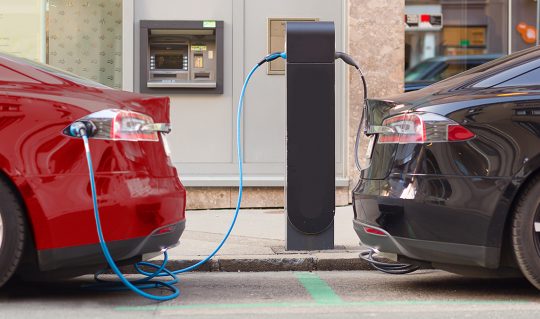5 Reasons & Fix: Battery Light On but Car Runs Fine
The battery light may come on despite the car running fine due to a discharged or weak battery, loose battery cables, acid corrosion on the battery terminals, or a malfunctioning alternator. Loose cable clamps between the battery and its respective cables can also cause the battery light to illuminate while driving. To fix this issue, you can clean the battery terminals or tighten any loose cable clamps. It’s important to address the battery light coming on as it can indicate a problem with the charging system or battery. 1. Weak Or Discharged Battery 1. Weak or Discharged Battery When the battery light on your car’s dashboard comes on, but your car continues to run fine, it could be due to a weak or discharged battery. A weak or discharged battery means that it doesn’t have enough power to efficiently run the electrical components of your car. Symptoms Of A Weak Or Discharged Battery Your car takes longer to start or struggles to start You experience dimming headlights or interior lights Your car’s electrical components (such as radio or power windows) don’t work properly Causes Of Battery Discharge There are several reasons why your battery may become weak or discharged: Leaving lights or other electrical components on when the engine is not running A faulty charging system, such as a malfunctioning alternator or voltage regulator Aging battery that no longer holds a charge efficiently Parasitic electrical drain, where a component or system in your car drains the battery even when the engine is off Extreme temperatures that can affect the performance of the battery How To Fix A Weak Or Discharged Battery If you’re dealing with a weak or discharged battery, here are a few steps you can take to resolve the issue: Check the battery terminals for any signs of corrosion or looseness. Clean the terminals if necessary and make sure they are securely tightened. Jumpstart your car using jumper cables and a working vehicle. Allow your car to run for a while to charge the battery. If the battery is old and no longer holds a charge, it may be time to replace it with a new one. Consider getting a battery charger or a battery maintainer to keep your battery charged and in good condition. If you suspect a parasitic electrical drain, consult a professional to diagnose and fix the issue. By addressing a weak or discharged battery promptly, you can prevent potential issues and ensure that your car continues to run smoothly. 2. Loose Battery Cables One of the main reasons for the battery light to be on while the car runs fine could be loose battery cables. To fix this issue, you can clean the battery terminals and tighten any loose cable clamps to turn off the battery light. 2. Loose Battery Cables Significance Of Battery Cables Battery cables play a crucial role in the electrical system of your car. They are responsible for connecting the battery to various components, such as the alternator and starter motor. The cables are made up of electrical conductors that allow the flow of electric current, ensuring the proper functioning of these components. Without secure and properly connected battery cables, the electrical system of your car may suffer, leading to potential issues. How Loose Cables Can Cause The Battery Light To Come On When the battery cables become loose, it can disrupt the flow of electric current to various components of the car. As a result, the car’s electrical system may not receive enough power, causing the battery light to illuminate on the dashboard. Loose battery cables can also result in poor charging of the battery by the alternator, which may further contribute to the battery light coming on. Therefore, it is crucial to address this issue promptly to avoid any potential damage to your car’s electrical system. Steps To Tighten Loose Battery Cables Turn off the car’s engine and locate the battery under the hood. Identify the positive (+) and negative (-) terminals on the battery. Using a wrench or socket, loosen the nuts or clamps that secure the battery cables to the terminals. Remove the cables from the terminals, starting with the negative cable (-) followed by the positive cable (+). Inspect the terminals and the cable ends for any corrosion or dirt. Clean them if necessary using a wire brush or terminal cleaner. Place the positive cable (+) on the positive terminal of the battery and tighten the nut or clamp securely. Repeat the same process for the negative cable (-) and its terminal. Ensure that both cables are tightened properly and secure. Start the car’s engine and check if the battery light is still illuminated. If it is, it is recommended to have a professional mechanic inspect the electrical system for any other potential issues. By following these steps, you can effectively address loose battery cables and eliminate the issue of the battery light coming on in your car. It is essential to prioritize regular maintenance and inspections of your car’s electrical system to prevent any unexpected problems. 3. Acid Corrosion On Battery Terminals Excessive acid corrosion on the battery terminals is one of the main reasons why the battery light may stay on while the car runs fine. To fix this issue, you can clean the battery terminals or tighten any loose cable clamps to turn off the battery light. How does acid corrosion impact the performance of your car battery? Acid corrosion on battery terminals can have a significant impact on battery performance. When there is acid corrosion present, it can impede the flow of electricity between the battery and the car’s electrical system. This can lead to a range of issues, including difficulty starting the car, dimming headlights, and even complete battery failure. In order to ensure optimal battery performance, it is important to understand acid corrosion and how to remove it from battery terminals. Understanding Acid Corrosion Acid corrosion on battery terminals is a common issue that occurs when acidic residue
5 Reasons & Fix: Battery Light On but Car Runs Fine Read More »




